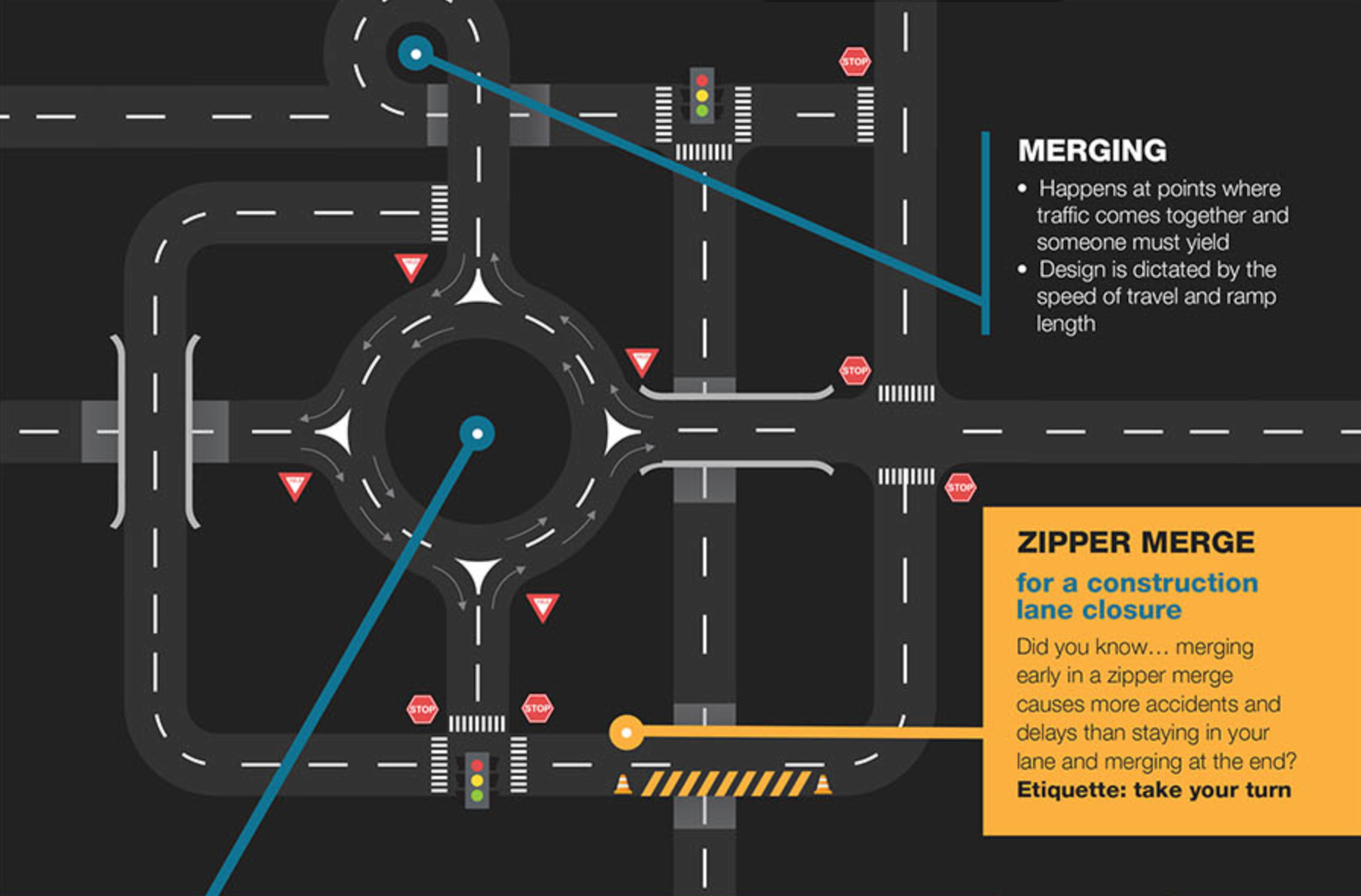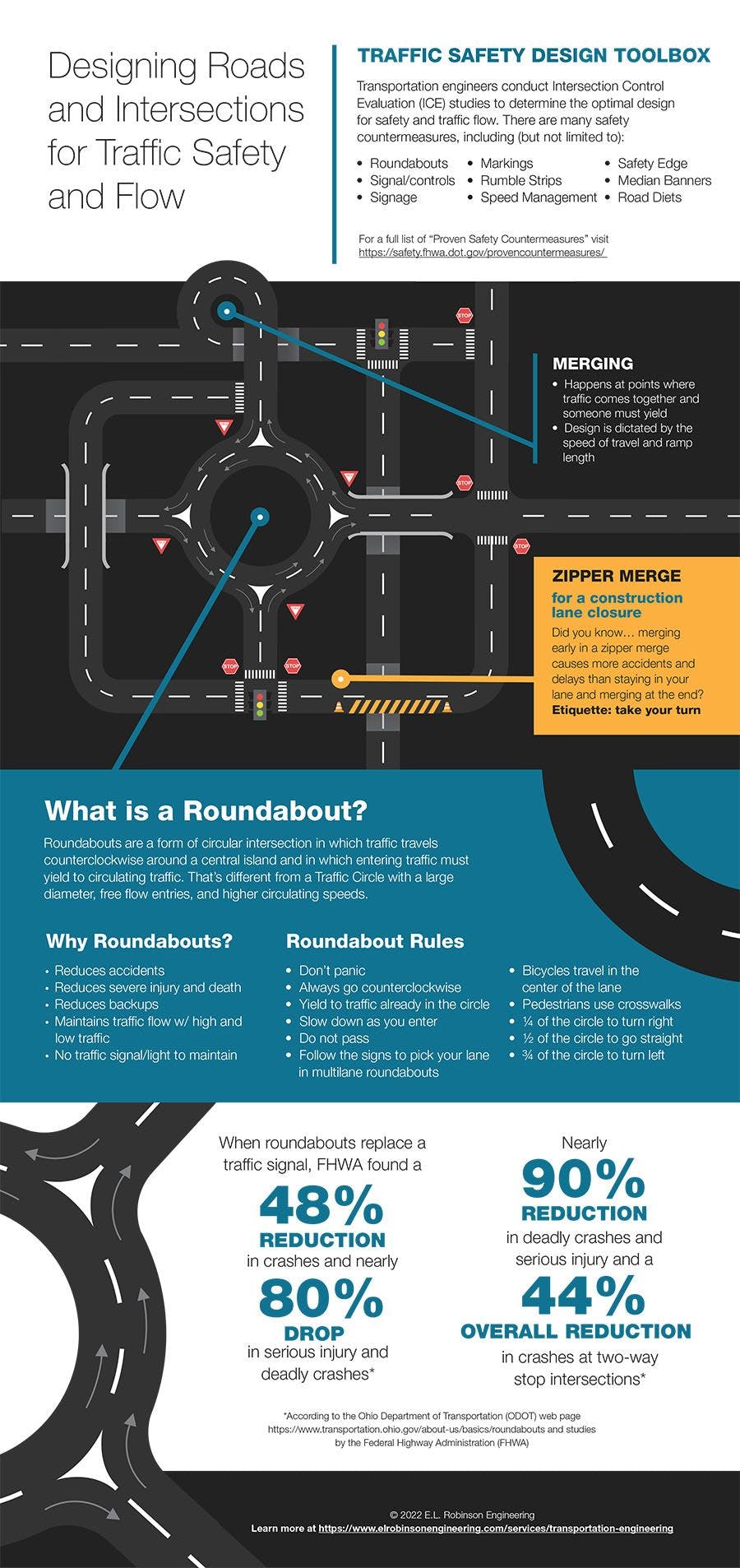June 29, 2022Designing Roads and Intersections for Traffic Safety and Flow


Traffic Safety Design Toolbox
Transportation engineers conduct Intersection Control Evaluation (ICE) studies to determine the optimal design for safety and traffic flow. There are many safety countermeasures, including (but not limited to):
- Roundabouts
- Signal/controls
- Signage
- Markings
- Rumble strips
- Speed Management
- Safety Edge
- Median Barriers
- Road Diets
For a full list of “Proven Safety Countermeasures” visit https://safety.fhwa.dot.gov/provencountermeasures/”
Roundabouts Can Improve Safety
According to the Ohio Department of Transportation (ODOT) web page and studies by the Federal Highway Administration (FHWA):
- When roundabouts replace a traffic signal, FHWA found a 48% reduction in crashes and a nearly 80% drop in serious injury and deadly crashes.
- Nearly 90% reduction in deadly crashes and serious injury and a 44% overall reduction in crashes at two-way stop intersections.
What is a Roundabout?
Roundabouts are a form of circular intersection in which traffic travels counterclockwise around a central island and in which entering traffic must yield to circulating traffic. That’s different from a Traffic Circle with a large diameter, free flow entries, and higher circulating speeds.
Why Roundabouts?
As highlighted in the statistics above, roundabouts have many benefits relative to certain types of intersections, including:
- Reduces accidents
- Reduces severe injury and death
- Reduces backups
- Maintains traffic flow w/ high and low traffic
- No traffic signal/light to maintain
Roundabout Rules
Even though roundabouts have clear safety benefits, many people still get nervous and imagine that they are risky. You’ll be in good shape if you follow these 10 basic guidelines:
- Don’t panic
- Always go counterclockwise
- Yield to traffic already in the circle
- Slow down as you enter
- Do not pass
- Bicycles travel in the center of the lane (just like cars)
- Pedestrians use crosswalks
- ¼ of the circle to turn right
- ½ of the circle to go straight
- ¾ of the circle to turn left
Merging
Merging happens at points where traffic comes together, and someone must yield. That’s true in roundabouts, but also at highway on- and off-ramps, road narrowing points, and lane closures. Design is dictated by the speed of travel, curves, and ramp length.
One particular type of merge is a “zipper merge” where a lane is closing for construction. Many drivers expect to move to the designated merging lane as soon as they see the sign, but the truth is that merging early in a zipper merge causes more accidents and delays than staying in your lane and merging at the end. The rule is to stay in your lane until you reach the merge point and then take your turn as those in the closing lane allow cars to “zipper in” every other car.
How We Determine Optimal Intersection Design
Our Transportation Engineering team frequently conducts Safety Studies, Operational Analysis, and Intersection Control Evaluation (ICE) studies to determine whether to recommend a roundabout, a signal, or a stop control intersection improvements. If you need an ICE study or any other traffic safety-related project, contact us to start the conversation.